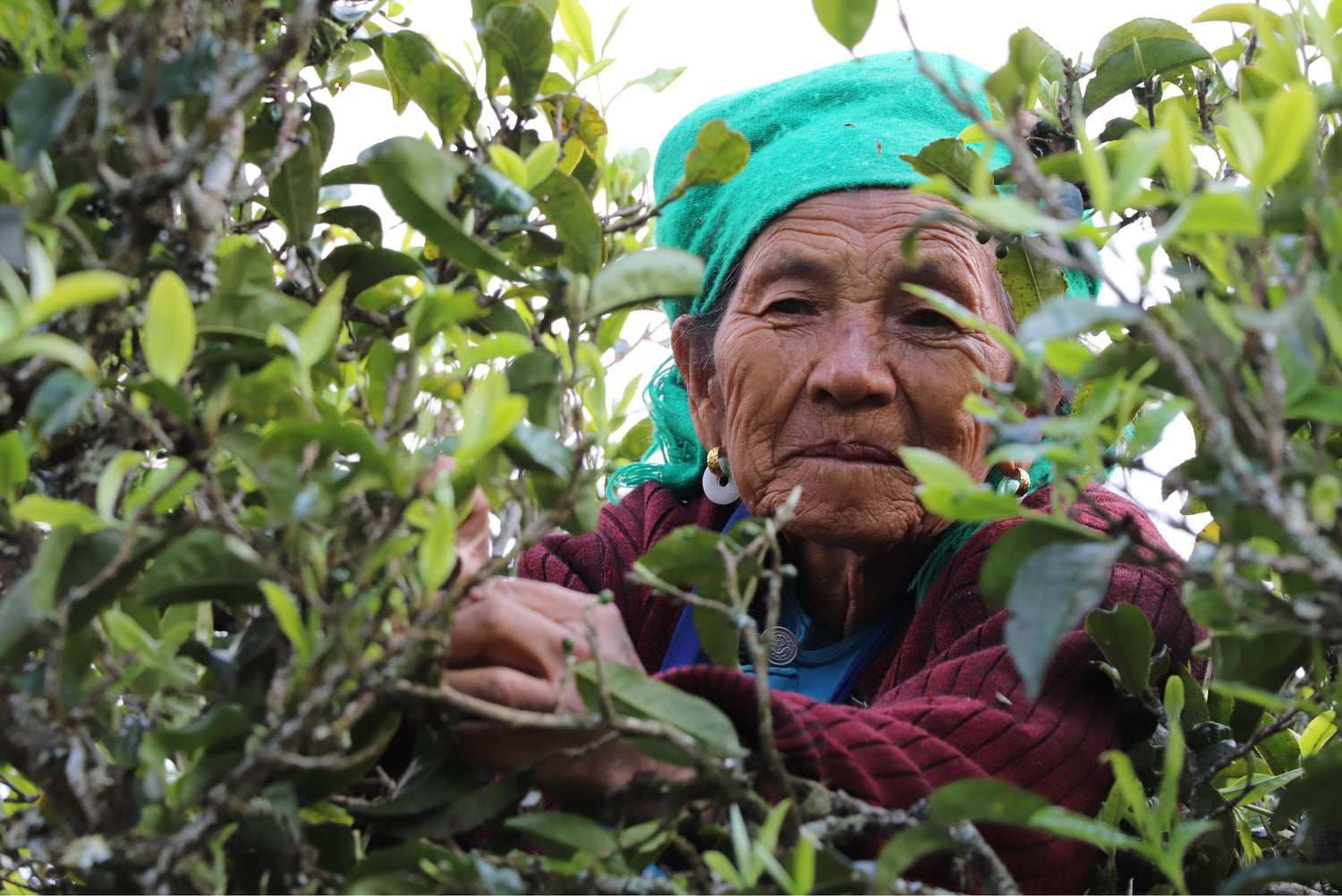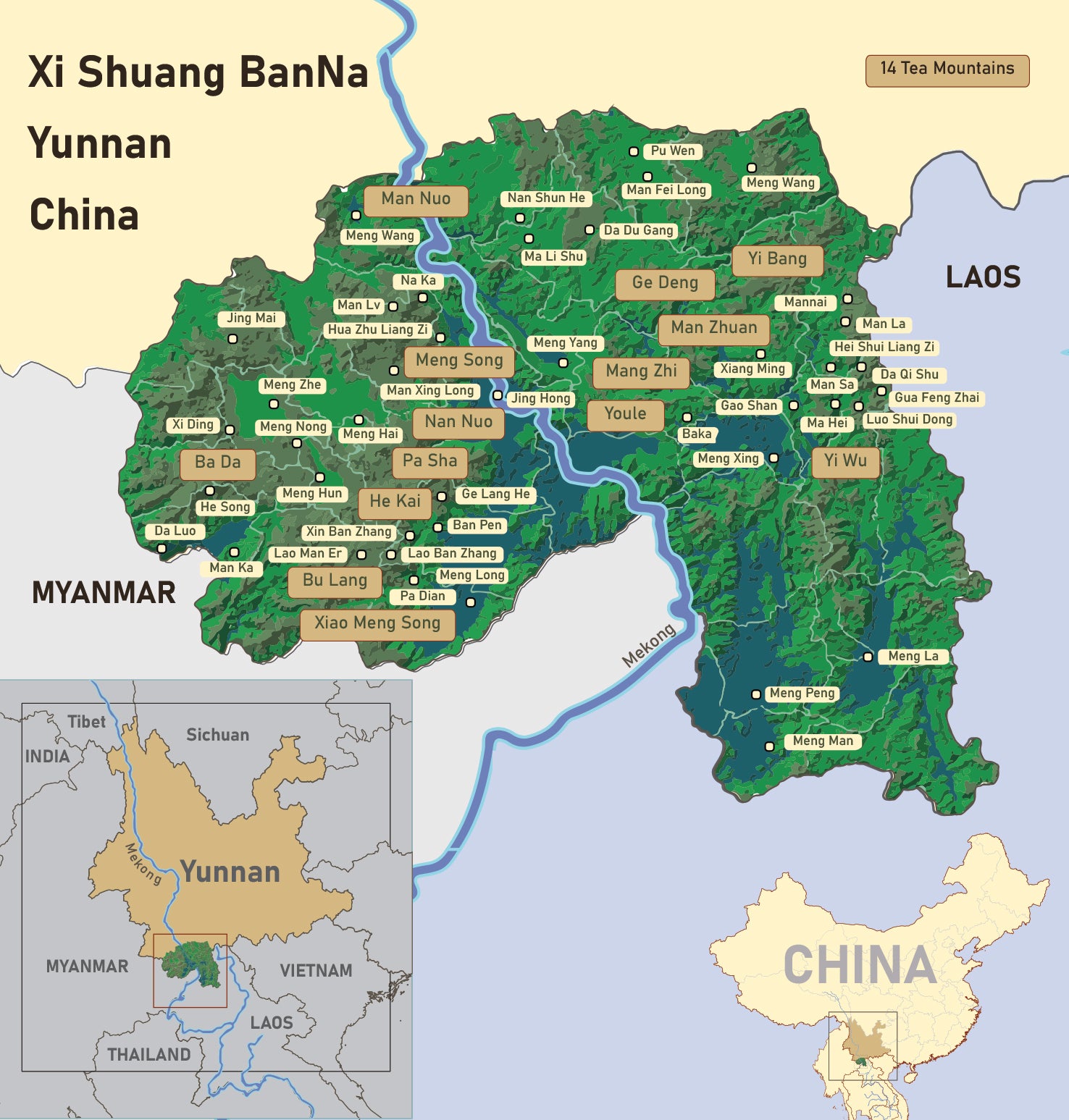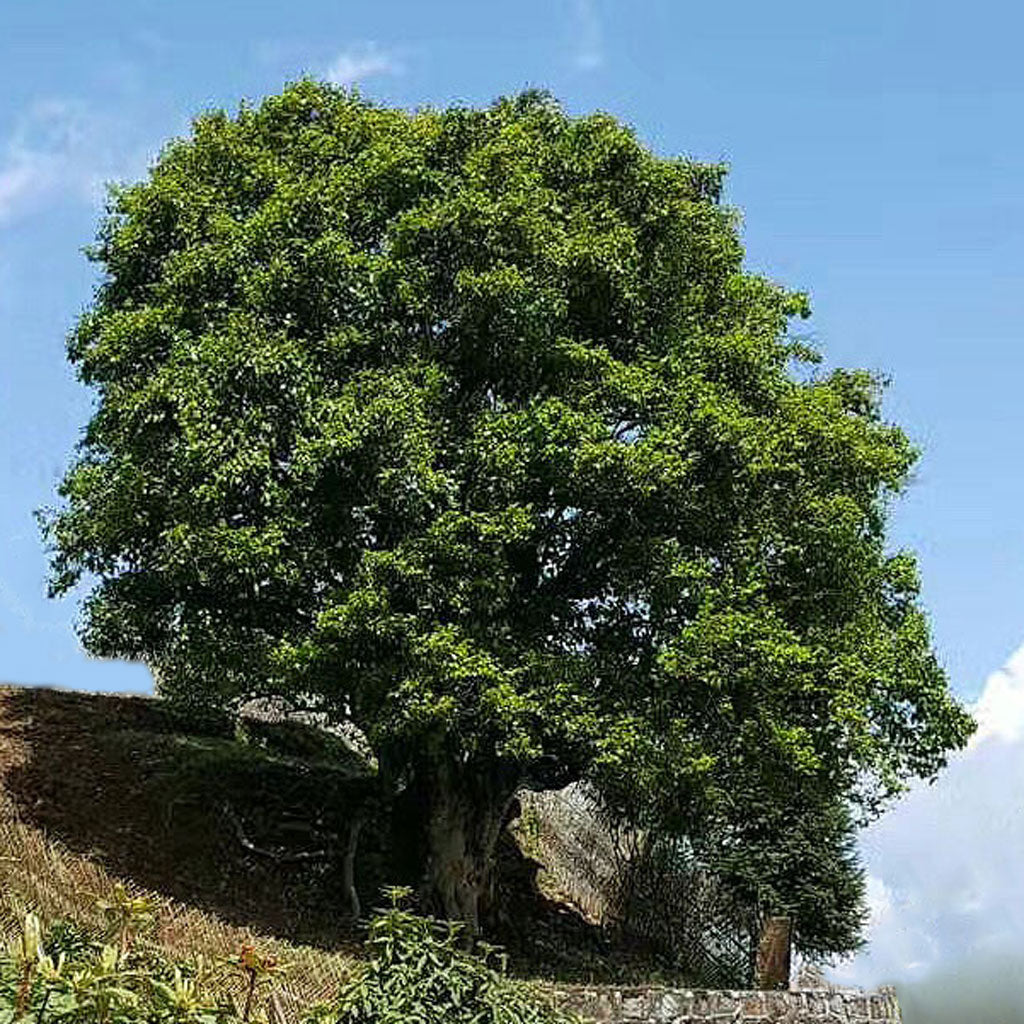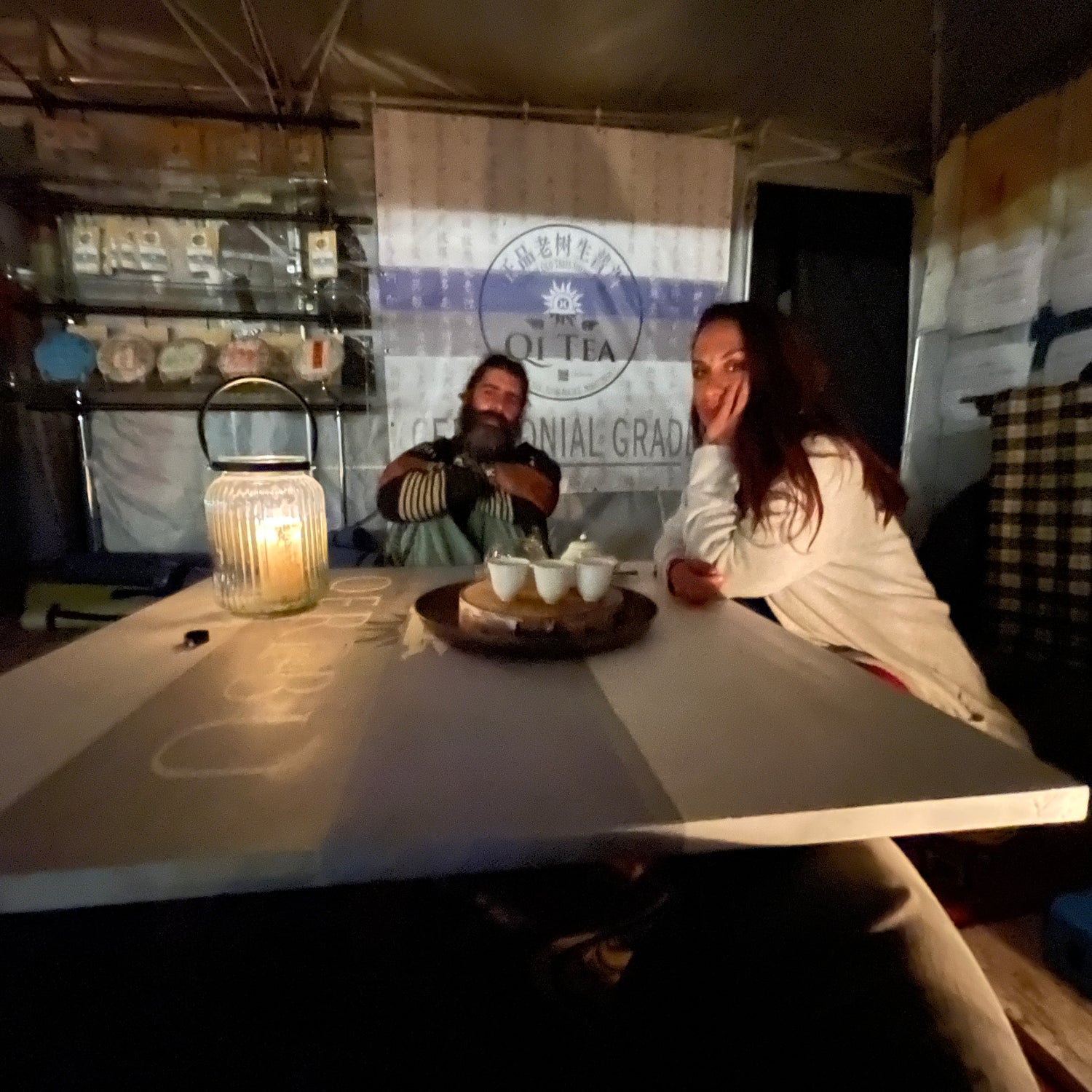About Puerh

Doing with Knowing
Shared Moving Meditation
Helping the flow of Qi around the body.
Opening channels to the core of our being.
Focus in the Body,
Easing blockages in the meridians.
When Qi is more tangible in the body it is easier to work with.
Uplifting, Opening, Allowing
Conducive to, Grounding, Embodiment, Yoga,
Mindfulness, Meditation, Contemplation
Conversation, Connection, Communion,
Engagement

XiShuangBanNa
"Twelve thousand acres" in the local Dai language.
The two thousand year old home of tea.
Deep Jungle Tea Trees.
The southwest hook of China, snuggled in between Laos, Vietnam, Myanmar and Thailand, nurtured by the Lancang / Mekong river.
The only piece of tropical forest inside China’s borders, only 0.2% of China's land supporting 24% of it's biodiversity and the only place where elephants still live in their natural habitat in China.
XiShuangBanNa
Yunnan China
"twelve thousand acres" in the local Dai (Thai) language. it is the two thousand year old home of tea.
Deep Jungle Tea Trees
The southwest hook of China,snuggled in between Laos, Vietnam, Myanmar and Thailand, nurtured by the Lancang / Mekong river. It is the only piece of tropical forest inside China’s borders,
0.2% of the land supporting 24% of China’s biodiversity
and the only place where elephants still live in their natural habitat in China
Ancient Tea Horse Road
Yunnan borders Tibet at 7000m, dropping in XiShuangBanNa to 70m.The evolution of Puerh is hand in hand with its conveyance.China hungry for horses, Tibetans for tea, led to compressing the tea for storage and for transport. In making its way along the ancient tea horse road through the thick and misty Yunnan rainforests, winding up to the high plains of Tibet it began to transform. Aging in Tibet the Buddhist monks came to realise the benefits of natural fermentation and aging.
Buddhist Monks
supported by the local tribes and ethnic groups of the Nan Zhao kingdom, established during the Tang Dynasty in what is today Yunnan province. This close connection between Buddhism and the place where Pu-erh tea originated, attributed a special spiritual significance to the way of preparing and drinking tea.

Camellia Sinensis
There are six kinds of tea: White, Green, Yellow, Black, Oolong, and Pu’erh.
All come from the same plant Camellia sinensis but are processed in different ways.
While most teas are pushed to become immediately palatable,
Puerh is aged in what we call the 'fermentation' process.
By utilising the rich bacterial and fungal cultures naturally present on the leaves, the tea is transformed. Young yellow leaves have a strong Qi which when consumed can be too strong and create a headache. However aged Puerh has a far more mellow energy profile which can be felt more subtly and profoundly.

The Art of Tea Ceremony
Amongst various plant medicines, Puerh tea is uniqely subtle and profound. It requires attention otherwise may be missed and adapts to the energy which we bring it. When we give our respect, attention and care it repays us with tremendous clarity and insight.
The most subtle medicine is the most transformative because it goes the deepest into our beings.
Ceremony provides the container in which we can most fully appreciate the tea. Whether alone or with company the ceremony space creates an atmosphere in which the tea can flourish.
-

404 - Page Not Found
-

Buddha's Laughter
-

Metta - Loving Kindness
-

Goddess of Clarity
-

The Philosopher






